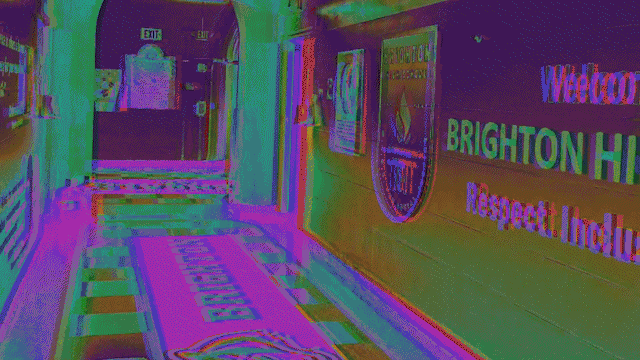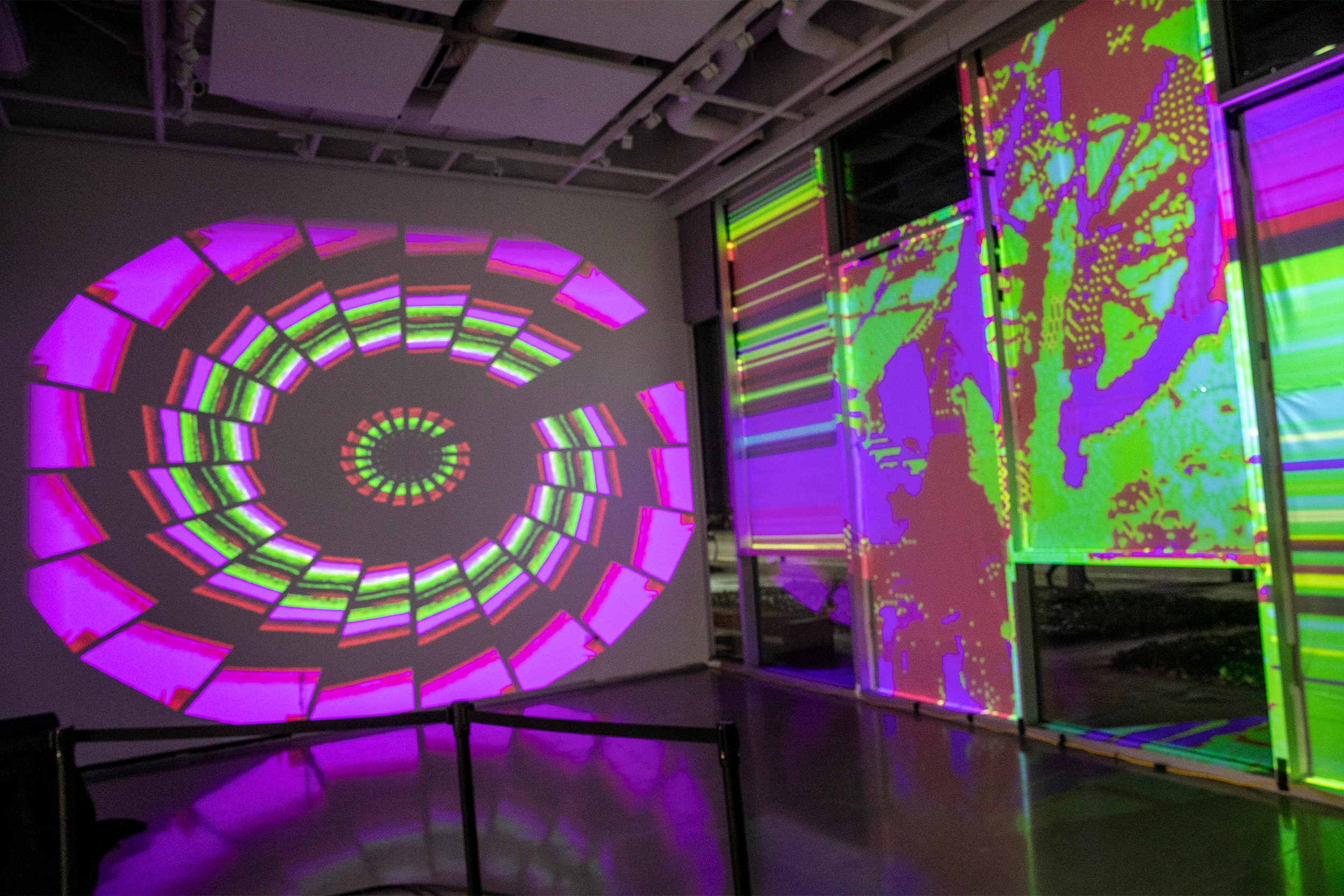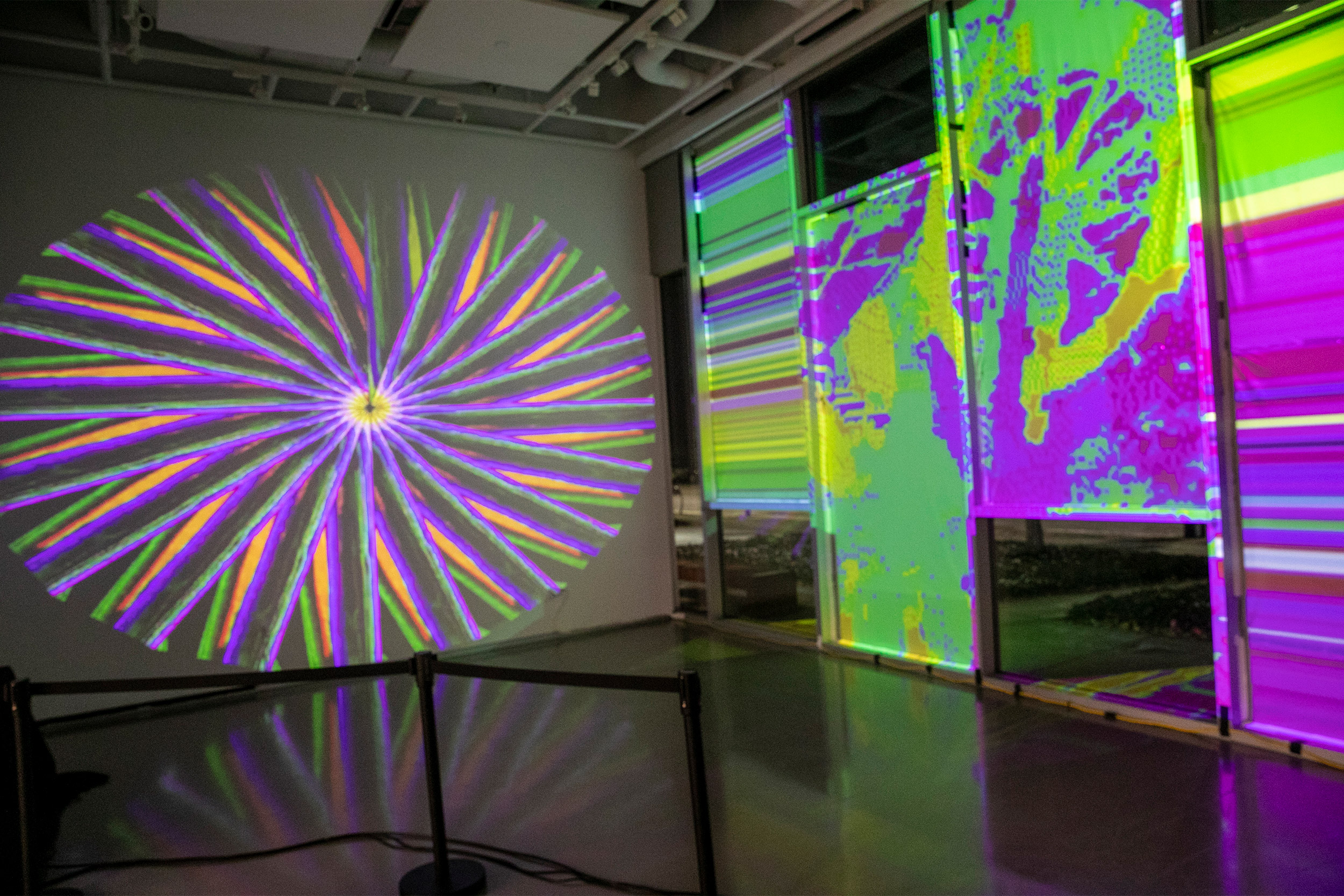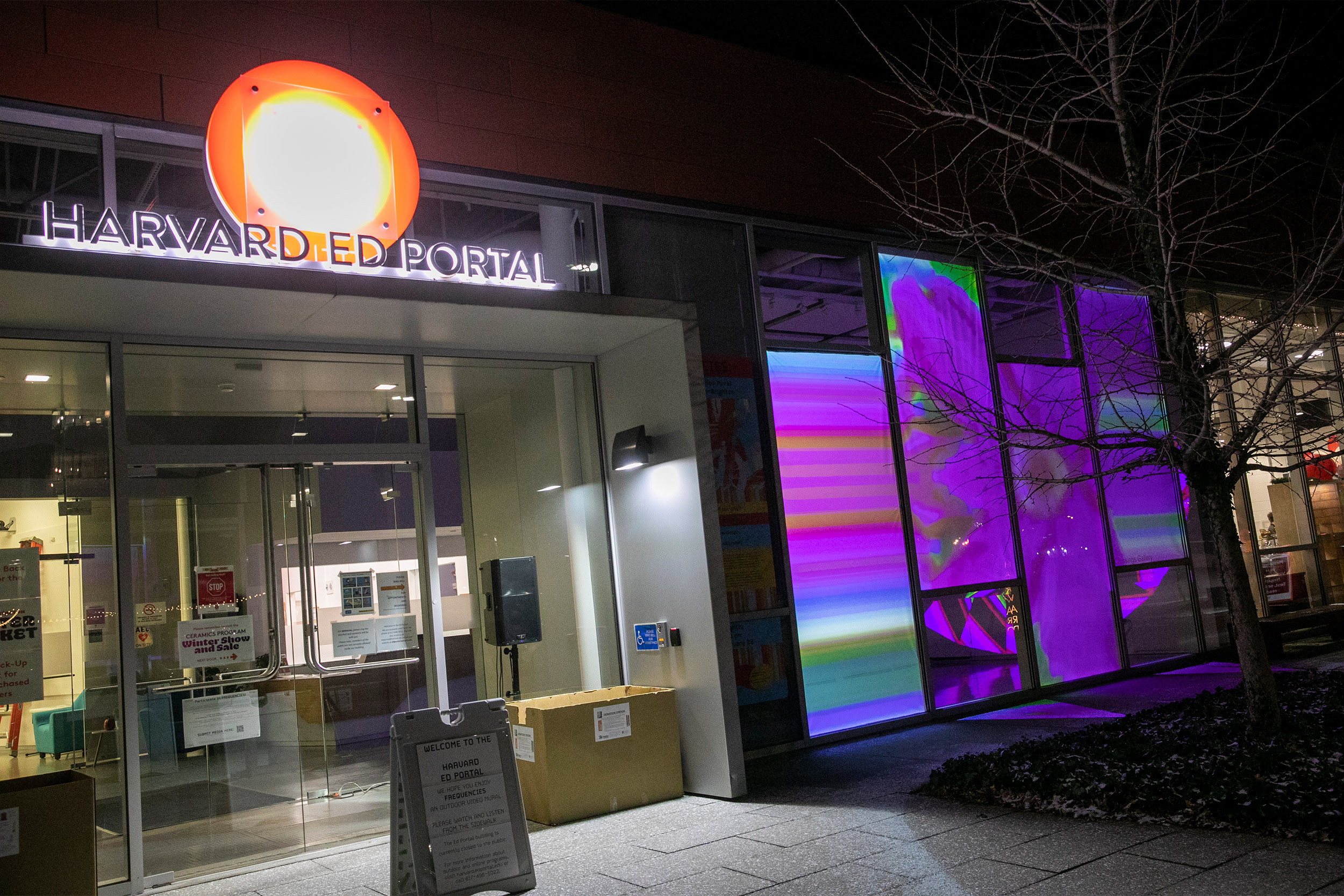
At Harvard’s Ed Portal, a 20-minute video loop plays crowdsourced sounds and visuals, including footage provided by Brighton High School students.
Courtesy of Allison Tanenhaus
Finding joy in the everyday
Artists digitally remix the everyday sights and sounds of Allston-Brighton in ‘Frequencies’
On winter evenings, people walking down Western Avenue in Allston are greeted by a blast of colors, images, and sound streaming through the windows of Harvard’s Ed Portal. A 20-minute video loop called “Frequencies” plays crowdsourced sounds and visuals collected from community members and remixed plays nightly from 5 to 10 through Feb. 28.
The art installation is a collaboration between two local artists: musician and composer Maria Finkelmeier and digital glitch artist Allison Tanenhaus ’05. After meeting at an Ed Portal artists’ workshop led by Finkelmeier, the two became fans of each other’s work and, eventually, friends as well. Early in the pandemic lockdown they capitalized on the digital aspects of collaboration and began to experiment with creating videos that combined Finkelmeier’s percussive sound with Tanenhaus’ art. “Frequencies” is their first commissioned work as collaborators.
“When the artists first pitched this project, we all knew it would be a bright star in Boston’s long, cold winters, but none of us expected we’d be this deep in COVID exhaustion, too. ‘Frequencies’ really energizes the neighborhood,” said Eve C. Alpern, assistant director for arts programming at the Ed Portal.
With support from the Ed Portal and a Transformative Public Art grant from the Boston Mayor’s Office of Arts and Culture, a video mural has been up and running since November. The loop incorporating all new sounds and footage went live in early January
“This past year, through the Transformative Public Art Program, we really focused on supporting projects that aimed to make space for joy, reconnection, and celebration. ‘Frequencies’ engaged with several of the themes of the program this year, including addressing our current sense of place and interrelatedness, providing a space for people to come together in a way that was safe, and finding a way to celebrate aspects of our daily lives during what continues to be such a difficult moment in time for so many of us,” said Kara Elliott-Ortega, chief of arts and culture for the city of Boston.


“Frequencies” offers an ever-changing video mural at Harvard’s Ed Portal.
Photos by Jon Chase/Harvard Staff Photographer
The artists said “Frequencies” is influenced and inspired by the daily rhythms of life, and how they have been affected by the pandemic.
“We wondered, how do we take where we are right now … stuck in place, stuck in our neighborhoods, how do we spin that to be something that we’re celebrating instead of something that we’re sick of?” said Tanenhaus.
“We wanted to invite the community to embrace the normal around them. We wondered what if we could give our artistic lens to the ‘normal’ — to celebrate it, to bring joy to it, to almost poke fun at our normal?” said Finkelmeier
With help from the Ed Portal, the artists used social media, word-of-mouth, and two in-person events to explain their project and solicit footage from the community. They received dozens of submissions from individuals and organizations including Campus Childcare and Providence House Assisted Living. Some of the most remarkable footage came from students in a visual arts class at Brighton High School. “They really showed us the world through their eyes. We got a slice of their life, and their unique perspective. We felt this intimacy and friendship that I wasn’t expecting,” said Tanenhaus.

The artists said “Frequencies” is influenced and inspired by the daily rhythms of life, and how they have been affected by the pandemic.
Jon Chase/Harvard Staff Photographer
The installation’s name came from the artists’ intention to find common threads of movement and rhythm in the submissions and weave them together. “That’s the purpose surrounding all of this. The opportunity to layer everybody’s reality upon one another,” said Finkelmeier.
The submitters’ diversity and age range meant the artists had a depth of source material, and the end result was a reflection of the community itself. While both artists used digital tools to manipulate and distort the raw material, often layering sounds and images until they were not immediately recognizable, “Frequencies” deliberately maintains a level of recognizability.
“I did have the public in mind especially the contributors — where I wanted them be able to say, ‘Oh, that’s my piece. I am in this. I’m represented,’” said Tanenhaus.
“It was risky for us because we didn’t know what kind of content we would get. We were saying we’re going to create art with what you send us — whatever it is! What we’re so excited by is the comfort that the community had with letting us into their spaces,” said Finkelmeier.
The loop incorporating all new sounds and footage went live in early January and will remain until Feb. 28.

The two plan to continue collaborating and are exploring the possibility of taking their crowd-sourcing approach to other communities to examine how the art would change to reflect the core character of another city or town.
Ultimately, Finkelmeier and Tanenhaus hope that “Frequencies” brings pleasure to those who visit it. “There’s intention and artistic integrity at the undercurrent of how we made decisions in the project, but we also don’t take ourselves too seriously. I think that’s what creates dynamic public art, because you want to invite, you want to make as many people feel comfortable as possible,” Finkelmeier said.




